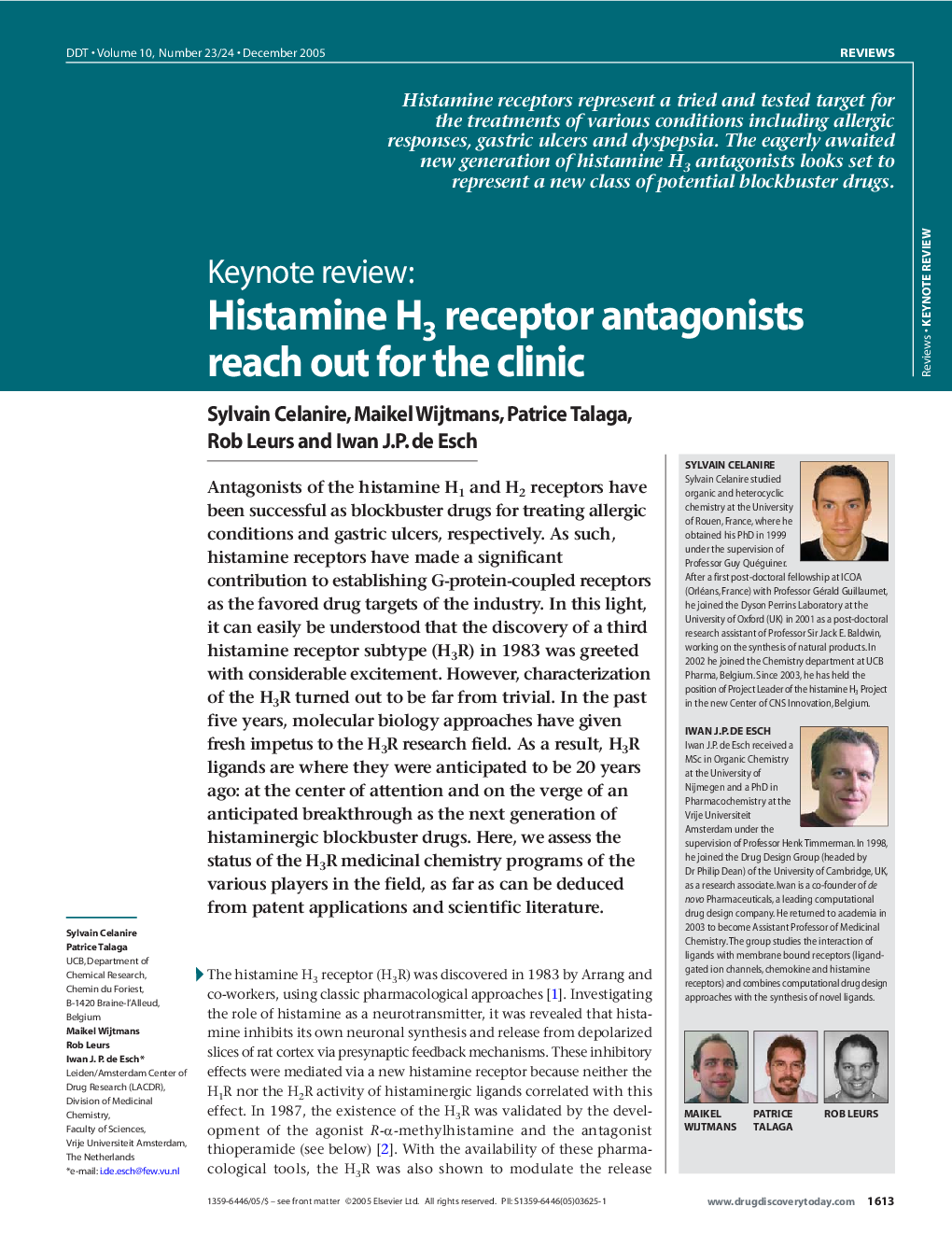| Article ID | Journal | Published Year | Pages | File Type |
|---|---|---|---|---|
| 9901312 | Drug Discovery Today | 2005 | 15 Pages |
Abstract
Antagonists of the histamine H1 and H2 receptors have been successful as blockbuster drugs for treating allergic conditions and gastric ulcers, respectively. As such, histamine receptors have made a significant contribution to establishing G-Protein-coupled receptors as the favored drug targets of the industry. In this light, it can easily be understood that the discovery of a third histamine receptor subtype (H3R) in 1983 was greeted with considerable excitement. However, characterization of the H3R turned out to be far from trivial. In the past five years, molecular biology approaches have given fresh impetus to the H3R research field. As a result, H3R ligands are where they were anticipated to be 20 years ago: at the center of attention and on the verge of an anticipated breakthrough as the next generation of histaminergic blockbuster drugs. Here, we assess the status of the H3R medicinal chemistry programs of the various players in the field, as far as can be deduced from patent applications and scientific literature.
Keywords
Related Topics
Life Sciences
Biochemistry, Genetics and Molecular Biology
Biotechnology
Authors
Sylvain Celanire, Maikel Wijtmans, Patrice Talaga, Rob Leurs, Iwan J.P. de Esch,
